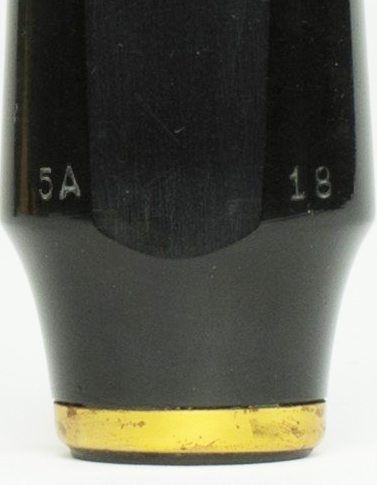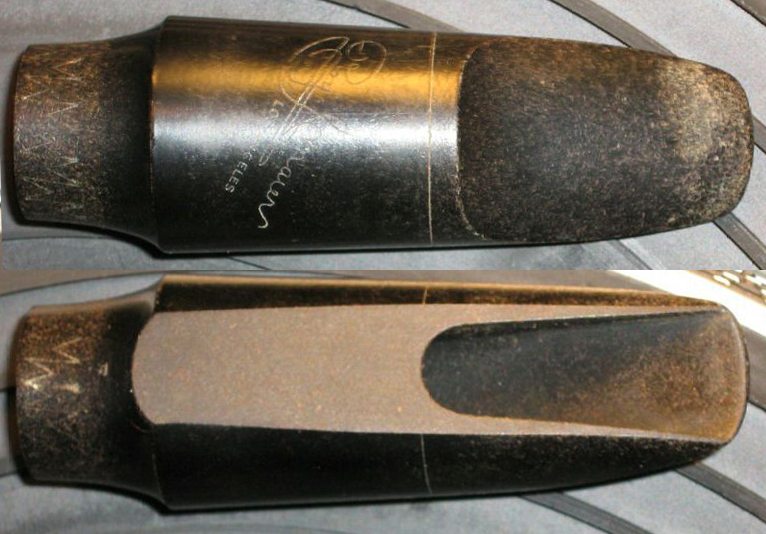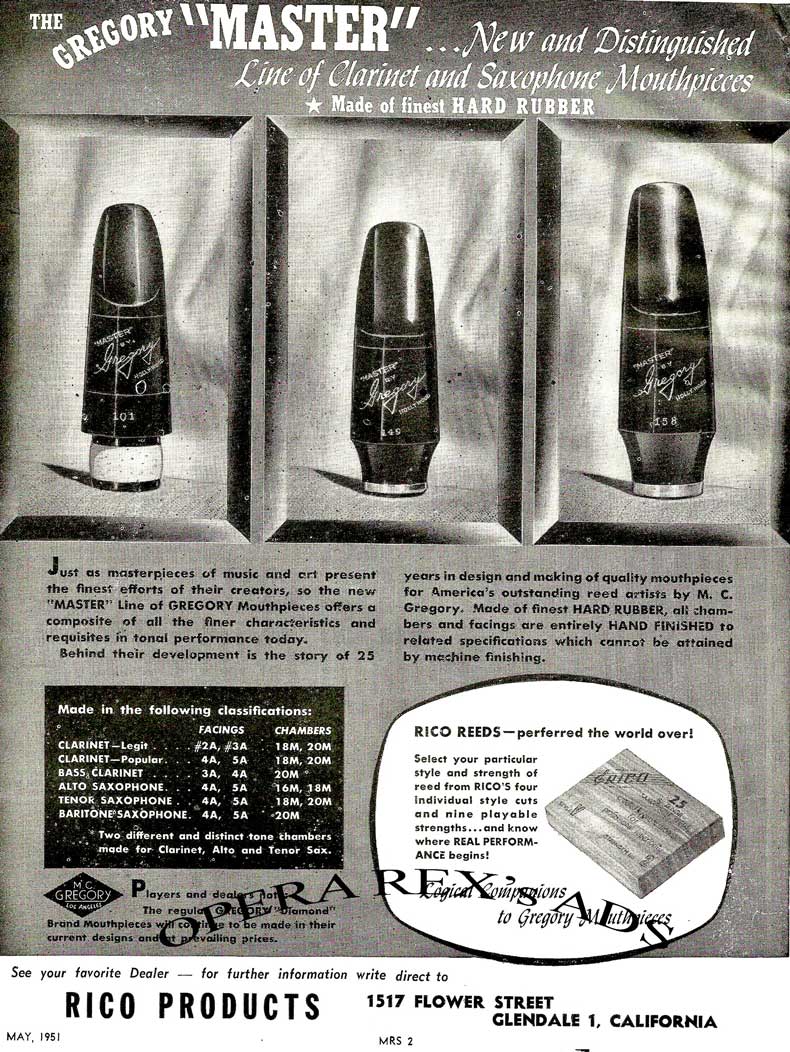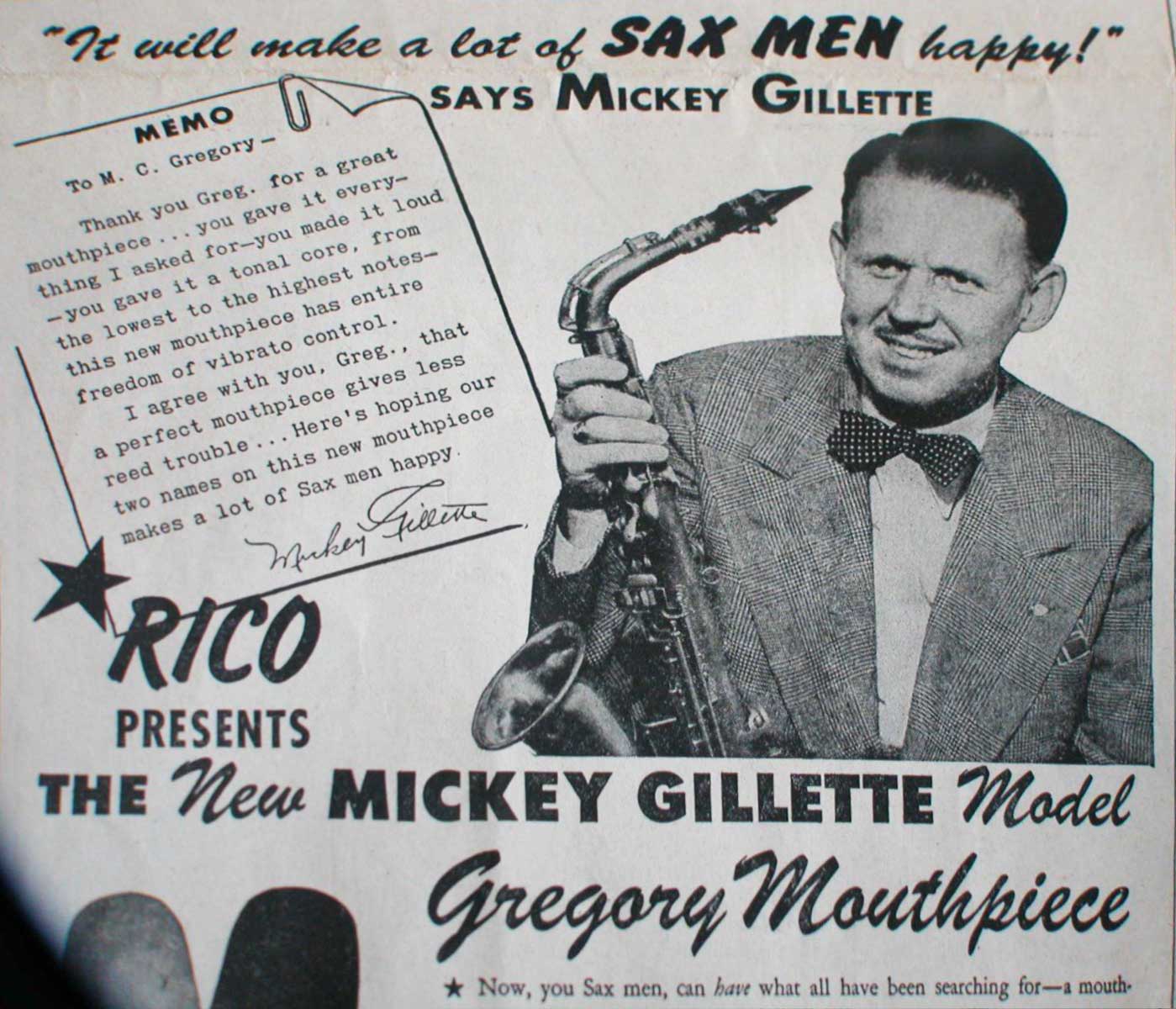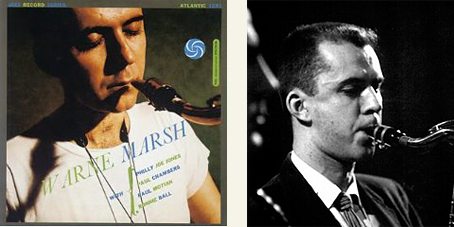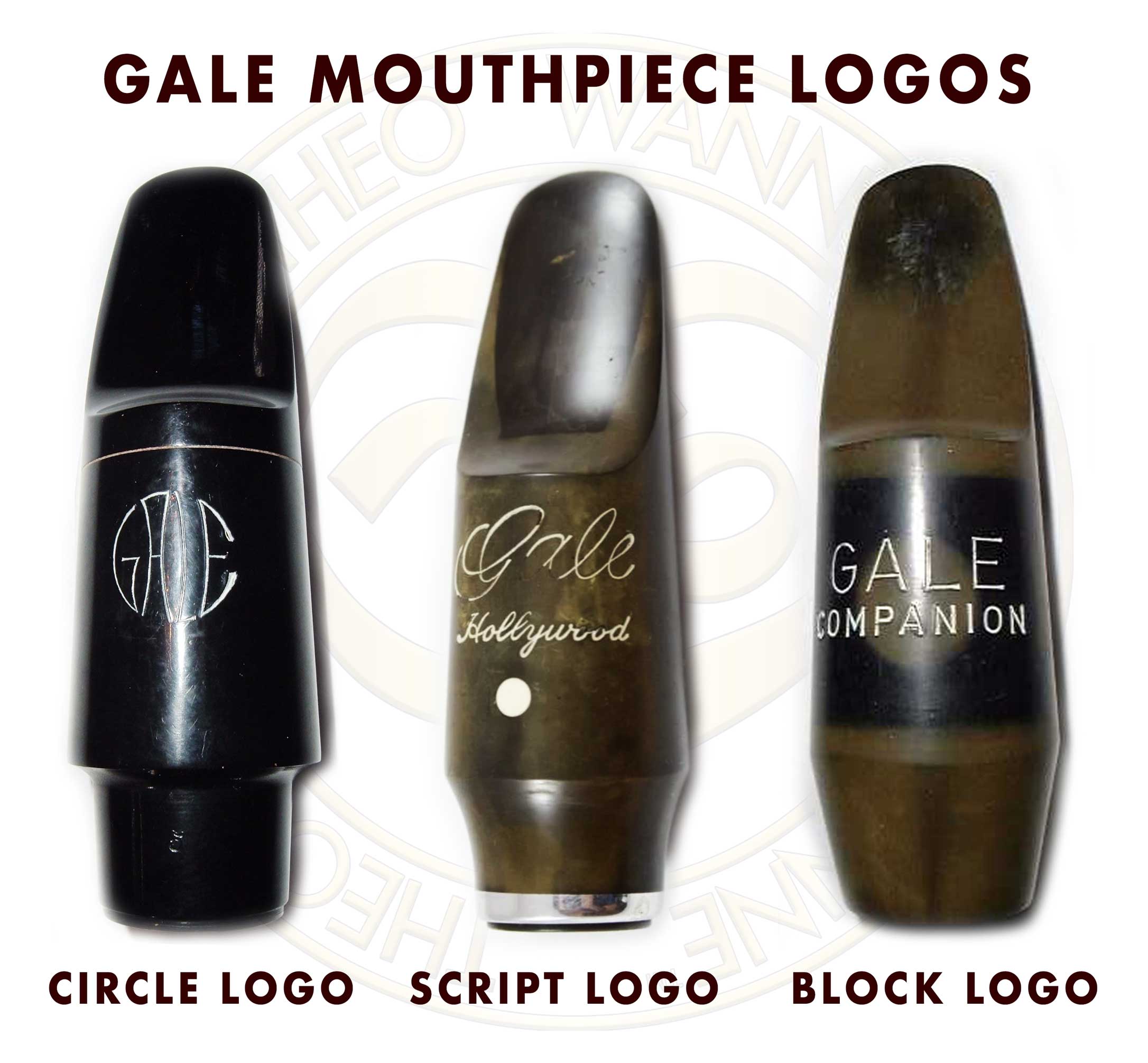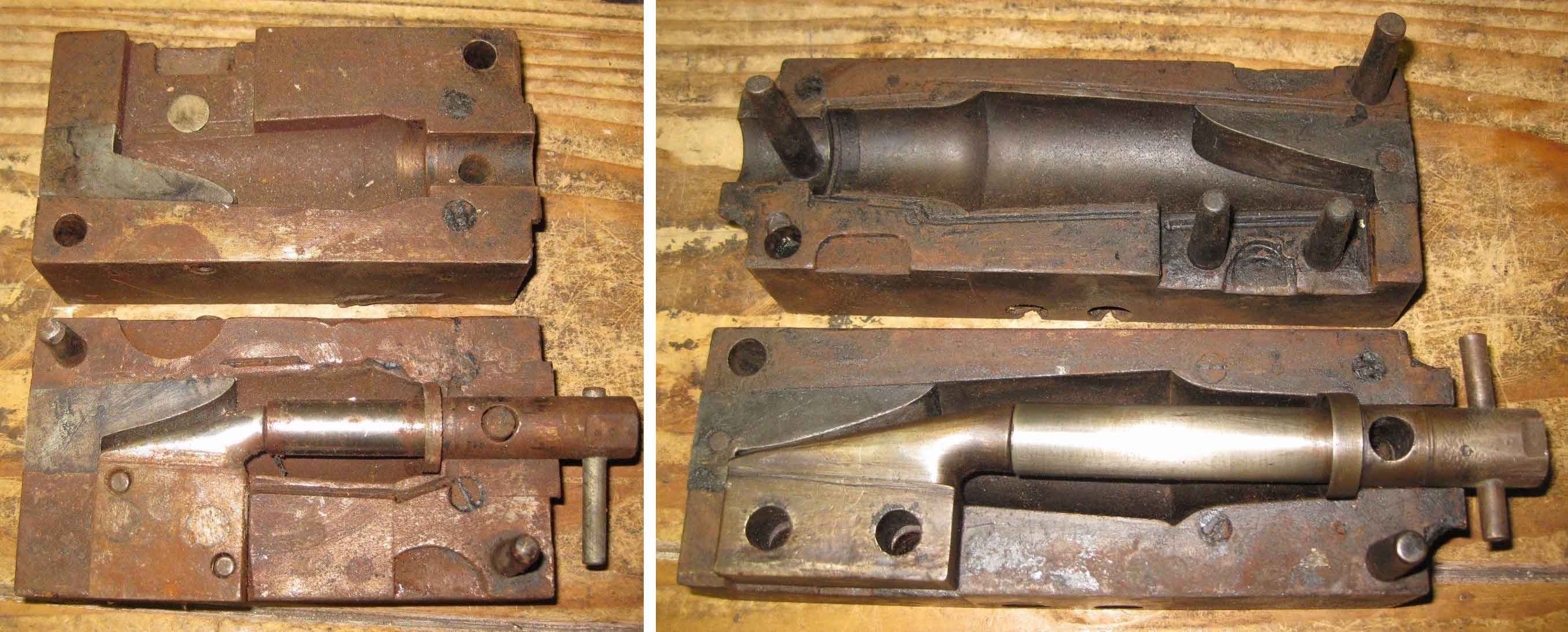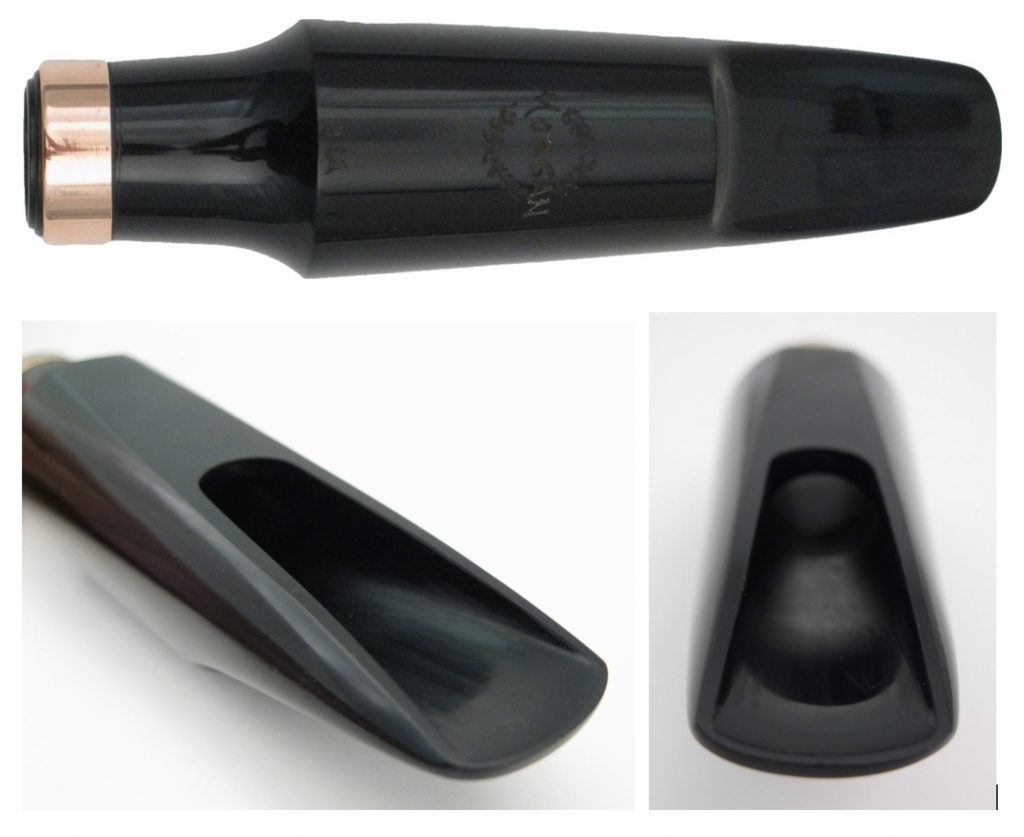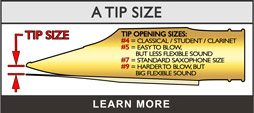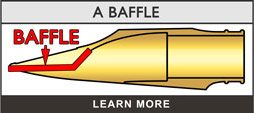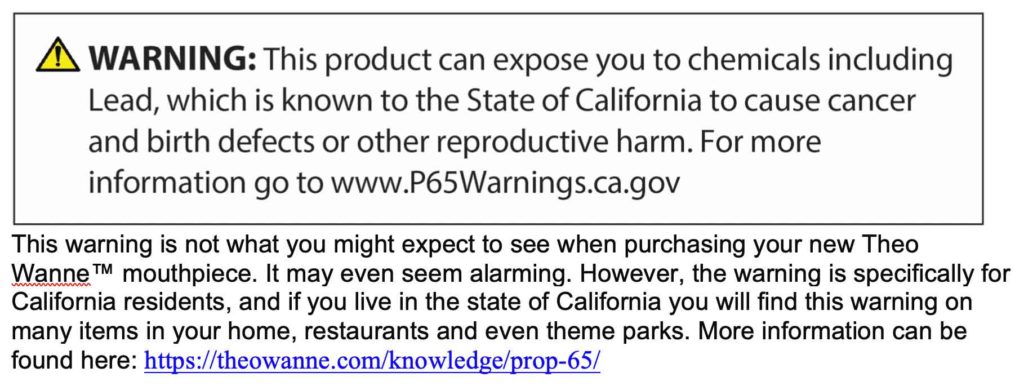M.C. Gregory (Malcolm Culver Gregory) was born in Beloit, Wisconsin on April 26, 1891. M.C. Gregory started his mouthpiece business around 1936. He made his own mouthpieces with the help of his wife Gladys. He also was a manager for Rico Products who distributed his mouthpieces for him. The first M.C. Gregory mouthpieces appear in the 1937 Selmer U.S.A. catalog.
Special thank to Paul Panella for his incredible amount of research and support. Here is a dropbox link to more of his great information on M.C. Gregory. Another recommended blog here also digs into this history.
- Tip opening Size: Came in size 1 to 5. Though size 1 was only available for clarinet.
- Facing (lay) Curve Length: ☆ = Short Facing; A = Medium Facing; B = Long Facing
- Chamber Size: 16 = small chamber; 18 = medium chamber; 20 = large chamber
A 5A18 would have a 5 tip opening, Medium Facing Length, and Medium Chamber. A 3*20 would be a 3 tip opening with a short facing and a large chamber. It is important to note that Gregory chamber sizes are not very different from each other. A 16 is similar to a 20. All are like variations on a medium chamber. The one exception is the very last 20 chamber Master Model Gregory made, which had a True-Large-Chamber like an Otto Link.
1936-1947 Gregory Model A
The first M.C. Gregory was called the ‘Model A’ and was made in 1936. It had “Rico Products, Ltd. -Distributors” stamped on the back, showing the tie between Mr. Gregory and Rico. The top bite area (where your top teeth rest on the mouthpiece) is very thin on these mouthpieces. The thinness of the rubber in this area allows for a great deal of vibration in the hard rubber. However, it also makes tooth wear on the mouthpiece a concern as well. These mouthpieces have rounded inner-side walls and a medium sized round chamber. All of these mouthpieces had serial numbers. The facings on these were all hand finished.
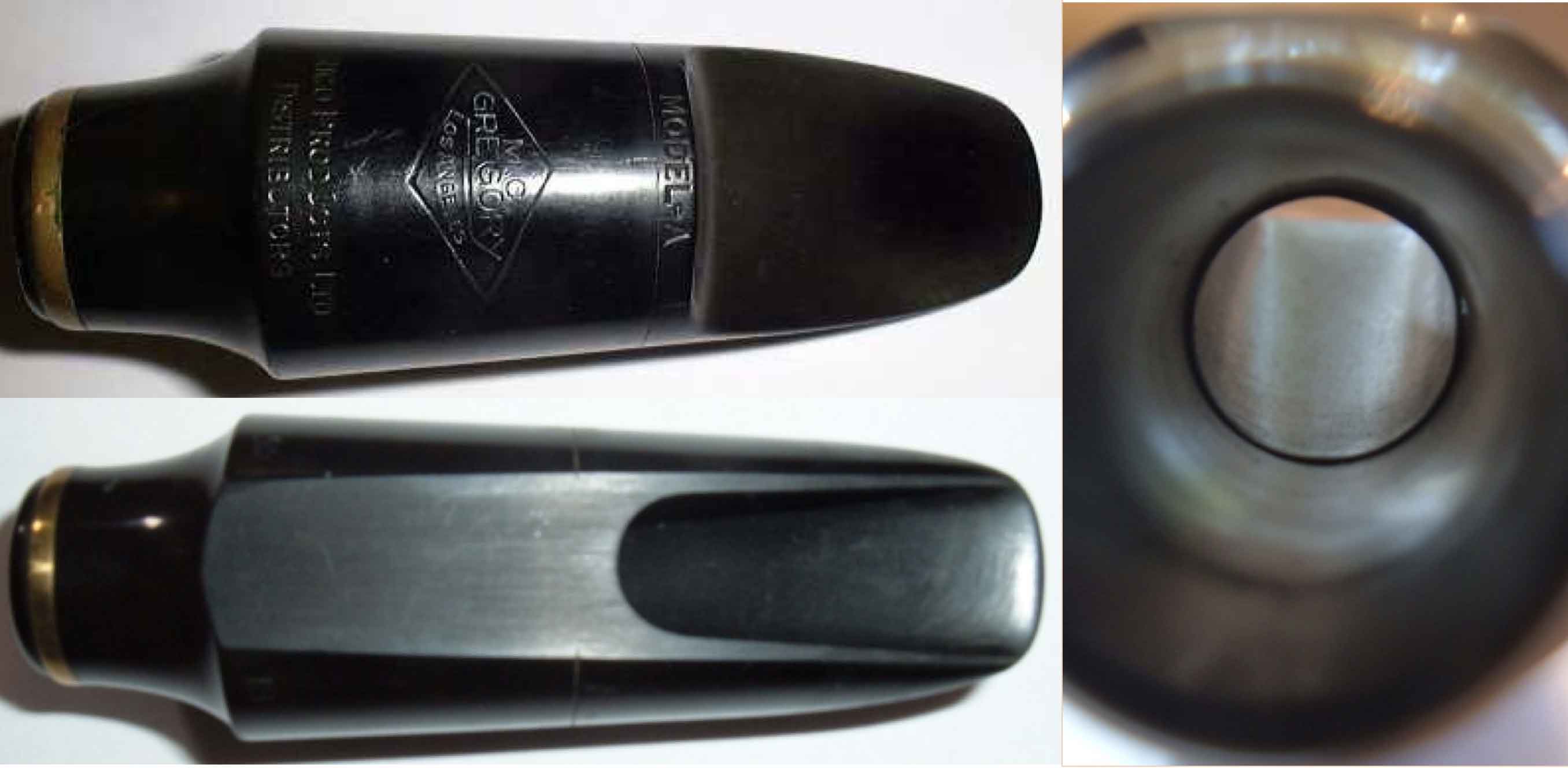
This is the mouthpiece made famous by Paul Desmond. He first played on a Model A4A 18. If you like his sound, you will probably like these mouthpieces. Later Paul also played on the Master Model as well though.
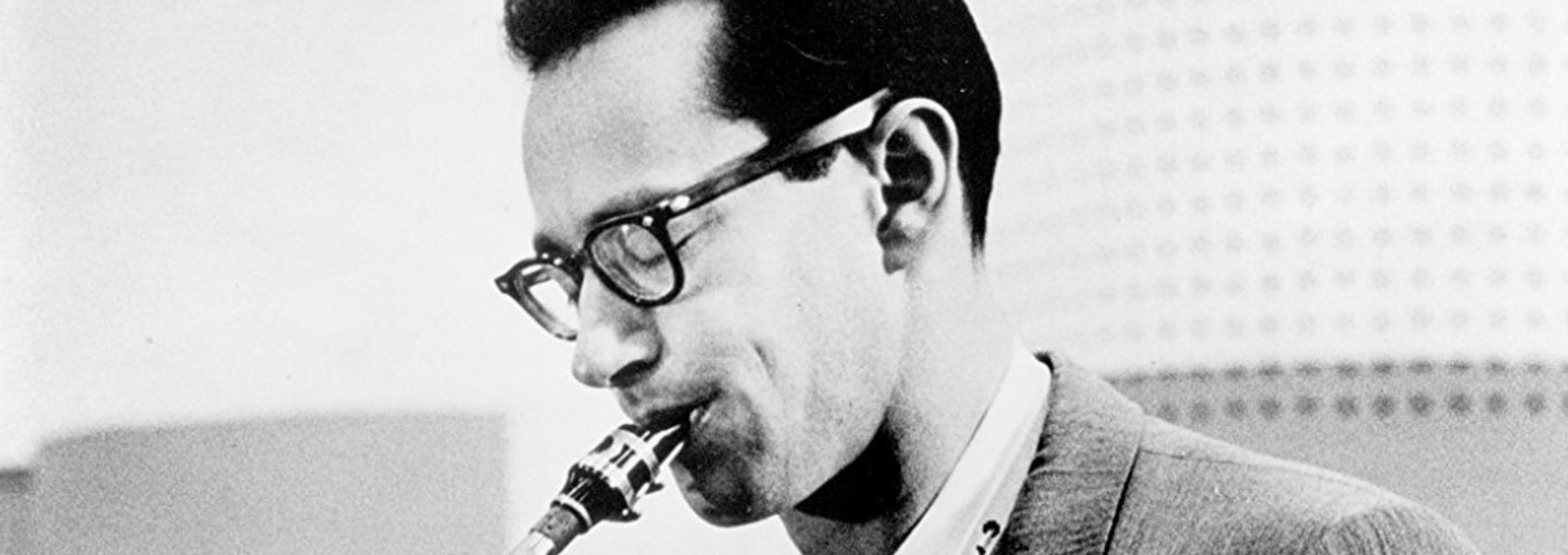
1936-1947: Gregory Model B
Made from the same great hard rubber as the Model A but with flat inner side walls. The chambers are a lot like a Brilhart Ebolin or Tonalin. These have almost no baffle too, making them a VERY dark sounding mouthpiece. In fact they are too dark for most musicians and are rarely played. They look similar in design to the model A on the outside except for the fact that they have very narrow bodies that actually take an alto ligature. In general, these mouthpiece play nothing like the Model A.
It is rumored that Gregory retired in 1947, which is why the Model A and Model B mouthpiece production ended. M.C. Gregory later passed away in 1955. If the serial numbers for Model A’s and Model B’s are accurate there would have been approximately 12,500 of them made between from 1936-1947.
1942-1945: Simpson
Rico Products released the Simpson mouthpiece, named after ‘Jimmy Simpson’. It is internally identical to the early M.C. Gregory Master Model.
You don’t see very many of these around. Besides being rare these are wonderful playing mouthpieces.
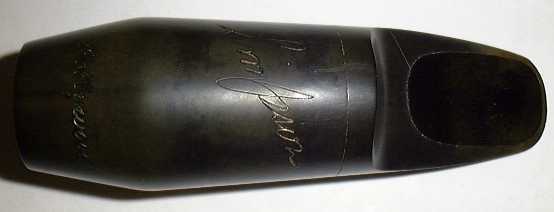
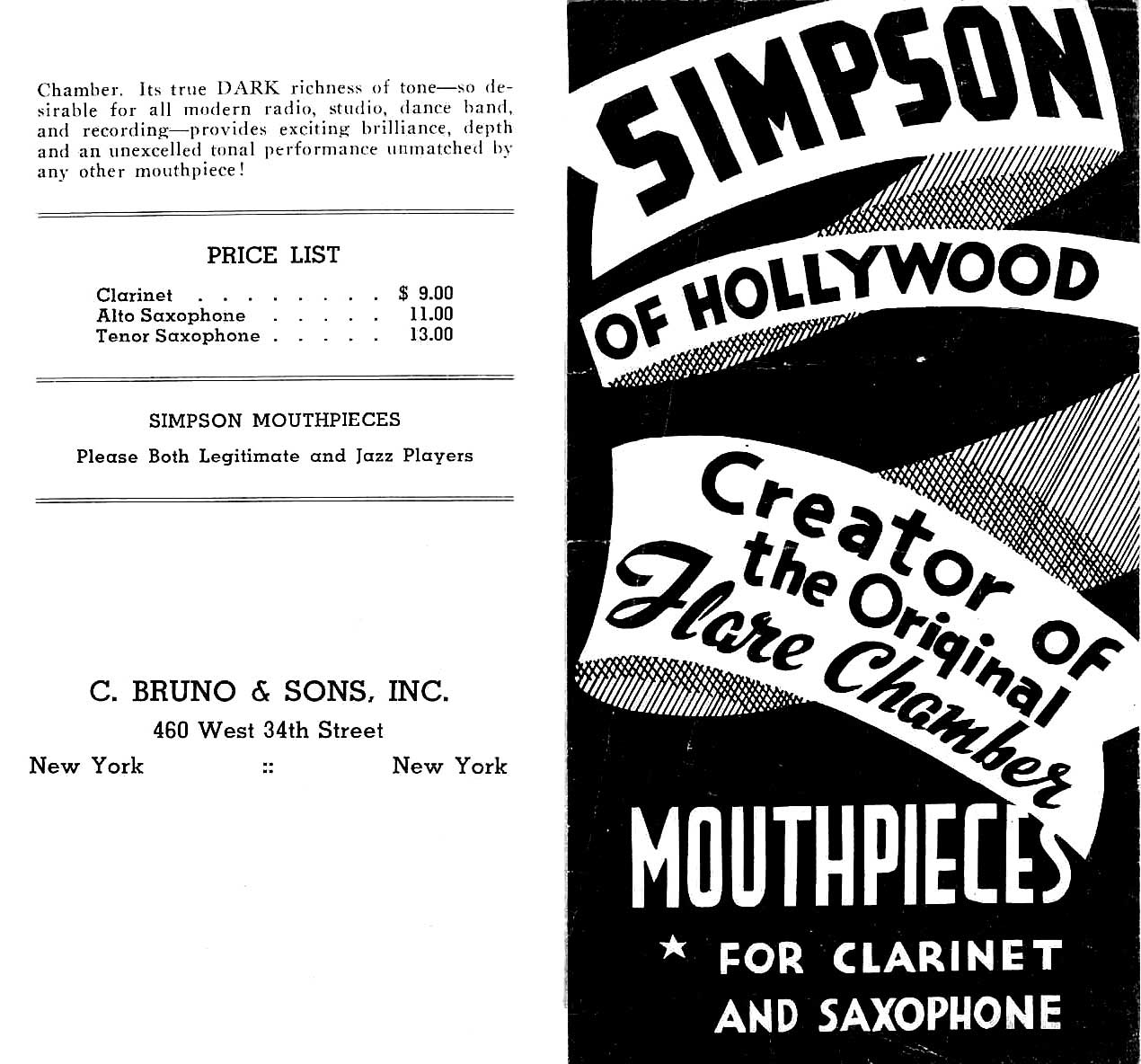
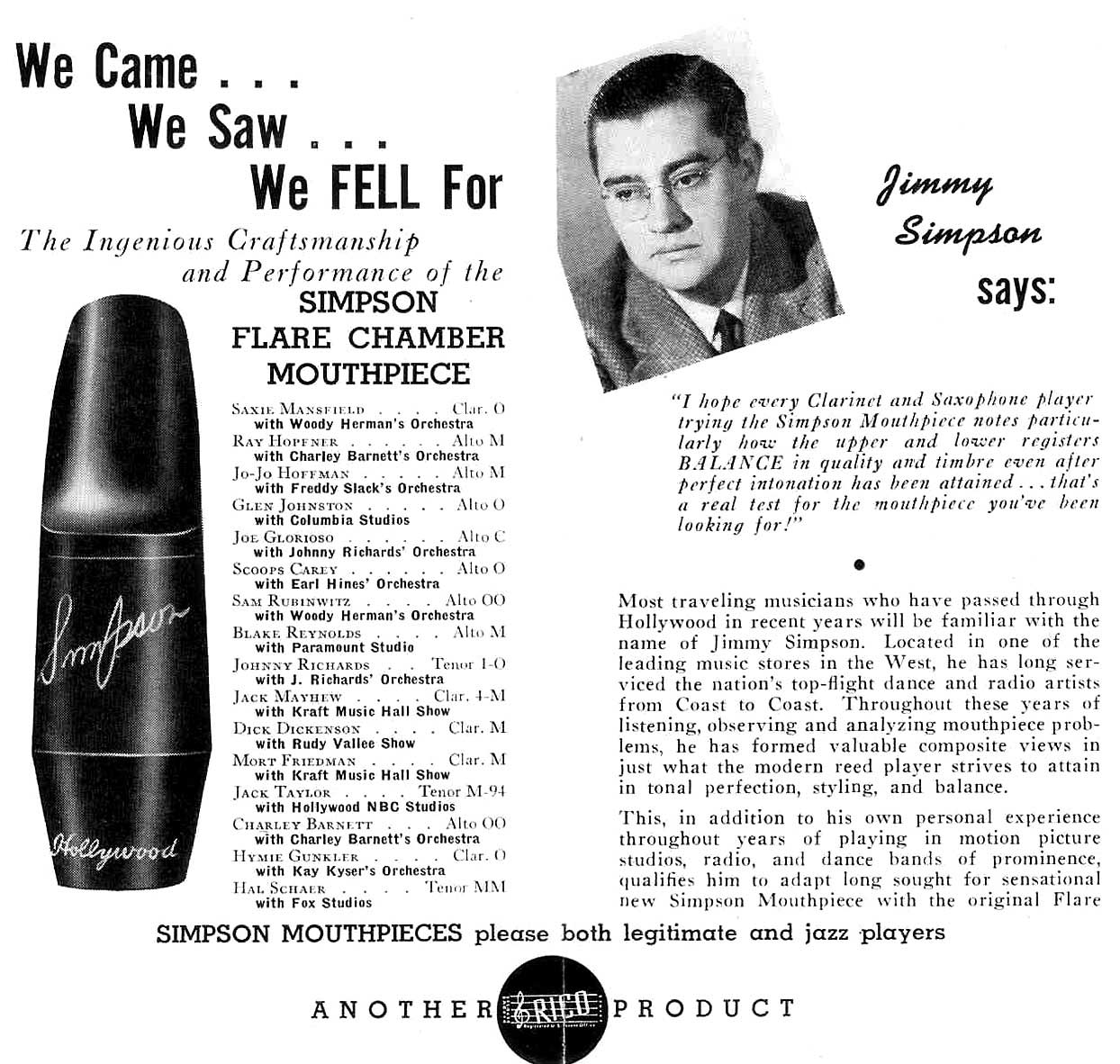
1944-1947: Roy Maier
The Roy Maier mouthpiece was released just before the M.C. Gregory Diamond mouthpiece. The two mouthpieces are very similar. Both say ‘Los Angeles’, both are made from ‘Resonite’, the new resin material Rico claimed to be waterproof.
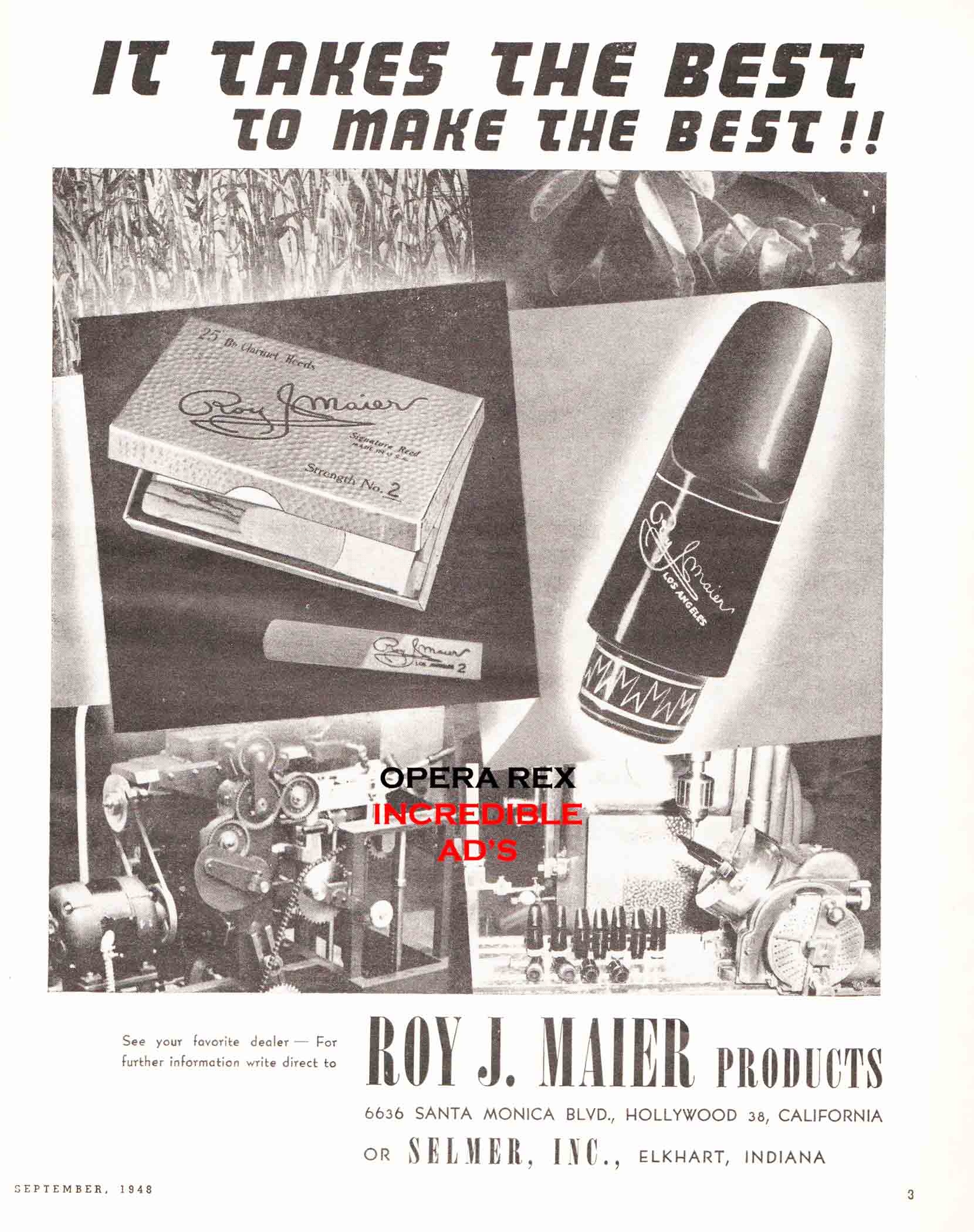
Gregory Diamond Ad 1955
1946-1968: Gregory Diamond
Interestingly they are made from a fiber filled resin called ‘Resonite’ instead of hard rubber like all the other Gregory mouthpieces. The only other manufacturer I’ve seen that has used ‘Resonite’ besides Gregory was Bundy, who advertised Resonite clarinets with with a one-piece Resonite body in the 1950 Selmer catalog.
The Rico name was on most variations of the ‘Diamond’ model. All of these mouthpieces had serial numbers. Like the Gregory Model B, they have flat inner side walls (like a Brilhart Ebolin or Tonalin). These have more baffle than the Model B’s did though, so they have a very nice sound because of the extra roll over to the baffle.
Diamond mouthpieces have the highest serial numbersof all Gregory mouthpiece. There were less than 20,000 Gregory Diamond and Master model mouthpieces made in the 22 years they were manufactured between 1946 and 1968.
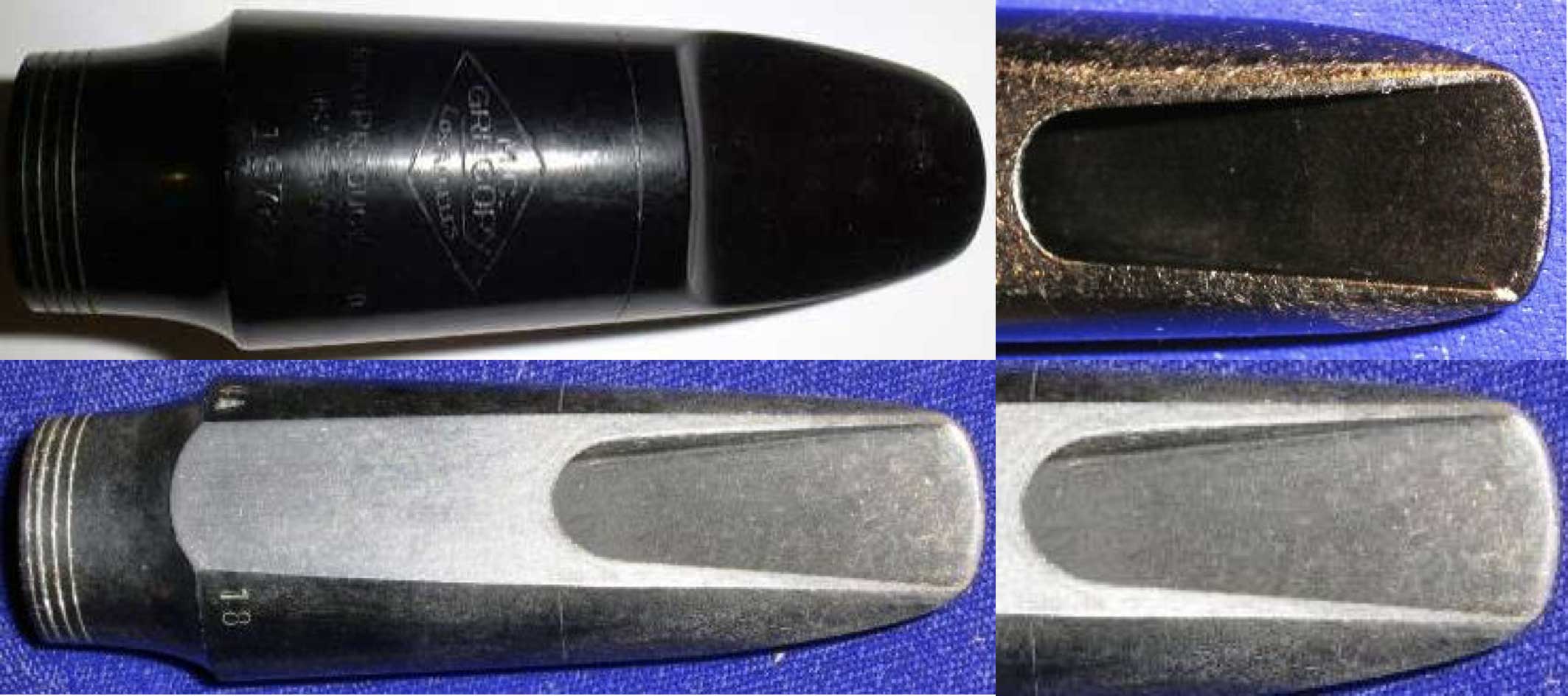
1947-1968: Gregory Master Model
These have more of a squared off shank and the top bite area is not quite as thin. The baffle and chamber are virtually identical though. Some of these had serial numbers, but the later ones did not. The interiors of these were sand blast finished. , The tables and rails were machine finished unlike the hand finishing done on the Model A models. The later ones had the facing number and chamber stamped on the back (see below).
The very last of this model (with a 20 chamber) did actually have a very large chamber, like an Otto Link. These sound a lot like an Otto Link and are very rare. Aside from the rare 20 chamber model, the later Gregory Masters are identical to the earlier ones. I believe they used the same molds for them. These later ones (without serial numbers) were produced at the Babbitt factory in Elkhart, Indiana. Though the Gregory mouthpieces were only produced there for a very brief time in 1969.
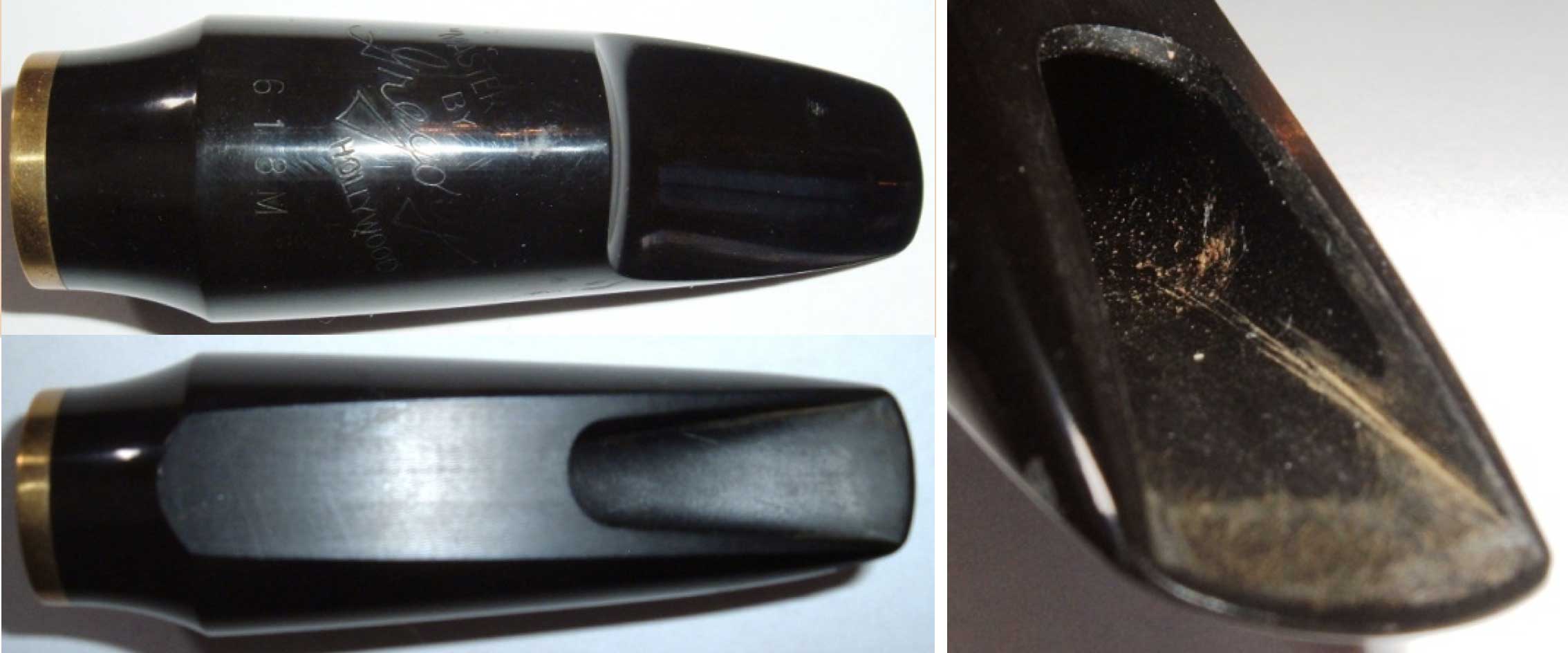
Below are samples of the MC Gregory Band. At the far left is the Model A, the middle version is the early Master Model, and on the right is the later Master Model.

1946-1966: Mickey Gillette
Mickey Gillette was a famous recording artist at the time. Rico released two different versions of a ‘Mickey Gillette’ mouthpiece. The first was hard rubber.
The second Mickey Gillette model was released later and was almost identical to the M.C. Gregory Diamond mouthpiece. In fact, it still had the diamond logo on it. Both have flat side walls and mildly increased brightness. Both are made from ‘Resonite’, the material Rico claimed to be waterproof. Both also have a serial number. However, neither has a metal band on the shank.

Micky Gillette’s most well-known student was probably Warne Marsh. Warne played with Lennie Tristano and Lee Konitz and made some of the most unique saxophone music in history.
1946-1968: Gale Hollywood
Gale mouthpieces were made by Carl Satzinger, who was M.C. Gregory’s son-in-law and protégé in 1946. Carl was married to Gregories daughter Maxine. Carl Satzinger designed the molds for Gale Mouthpieces.
Gale Products, Inc., incorporated in 1948, two years after Satzinger started making the Gale moiuthpieces. The founding shareholders and Board of Directors for Gale Products, Inc. were Carl Satzinger, Roy J. Maier of Rico Products, Ltd., Frank V. deMichele of Rico Products, Ltd., an L.A. attorney, Nathan H. Snyder, and his secretary. Within months of incorporation in April, 1948 Gale Products was sold to a businessman Cesar Tschudin, who then partnered with Elmer Beechler briefly from 1949-1950.
The business corporation only lasted one year, ending in 1949. Though it seems the mouthpieces were made until 1968.
After Satzinger sold Gale to Cesar Tschudin in 1948, Gale mouthpieces had two different stampings. The first was a ‘Script’ or signature of Gale which somewhat resembles M.C. Gregory’s signature. These usually had a metal band like the Gregory model A, B, and Master mouthpiece. This band was usually made from aluminum. Later Gale used block lettering for the logo. Gale mouthpieces were stamped with ‘Hollywood”, and did not use serial numbers.
These had a very thin bite section like the Model A Gregory and were produced just after World War II in Hollywood, California. The Gale mouthpieces do not have chamber sizes. ; They all are equivalent to the Gregory 18 (Medium) chamber.
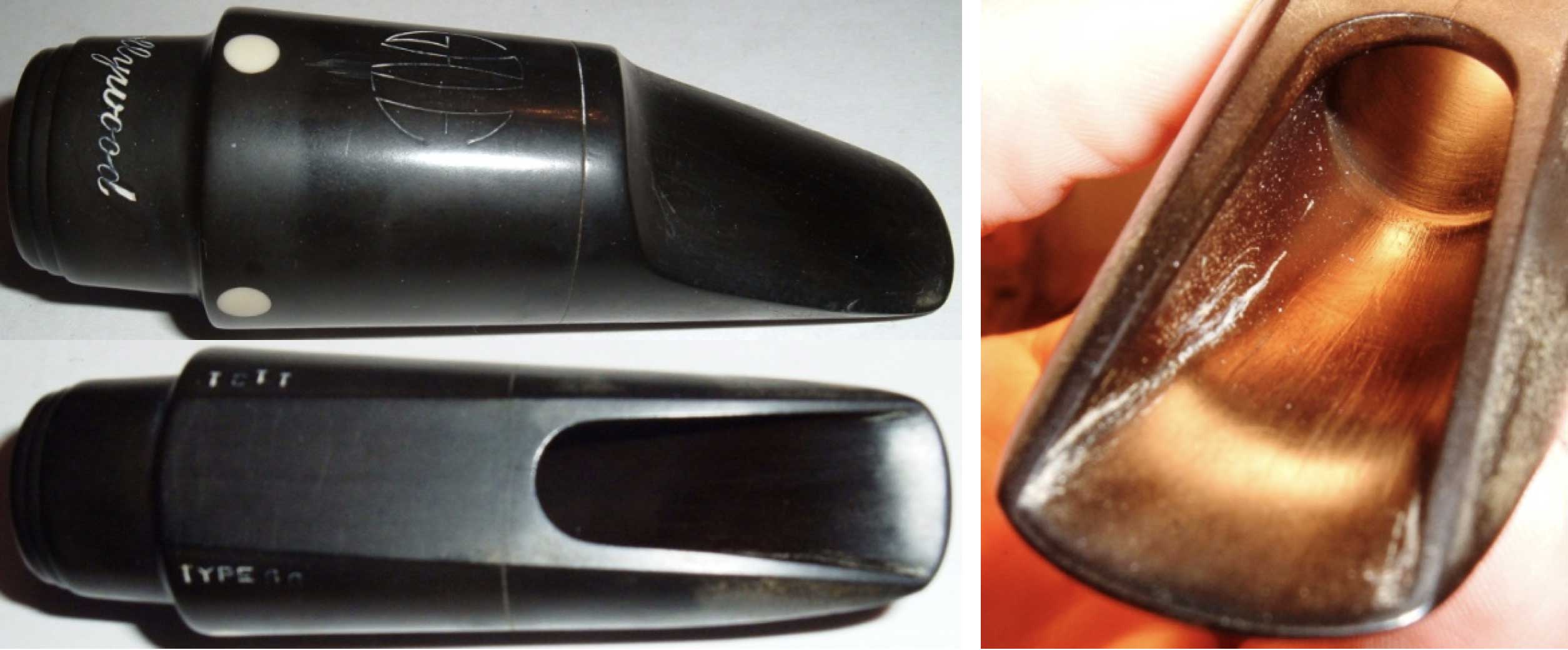
Later the dots were removed. The shank design is slightly different as well.
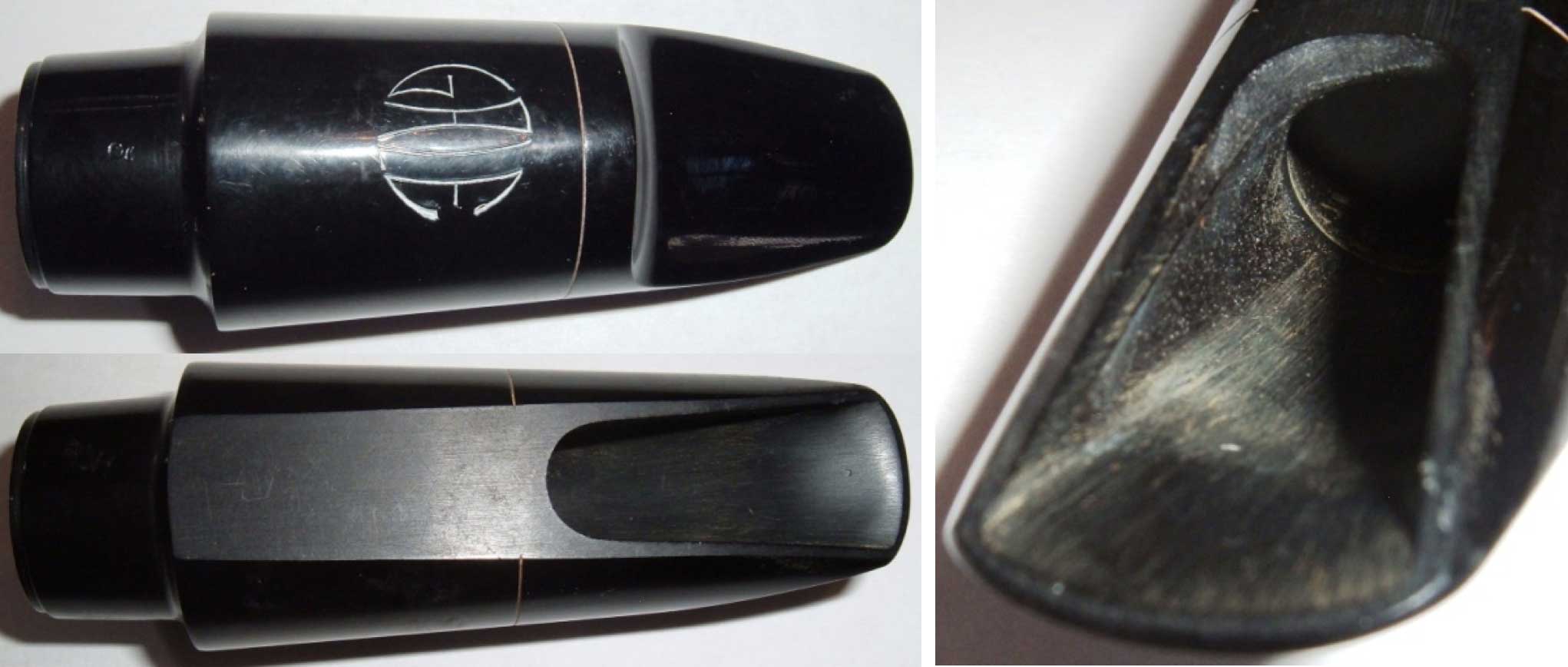
Gale Hollywood Triple Rail
This unique version of the Gale Hollywood mouthpiece had a third rail going down the middle of the throat of the mouthpiece. Does it play better with this third rail? No, it actually plays worse. But it looks cool! It was a great mouthpiece without the third rail and over the years many people did indeed remove the third rail in order to use them.

Gale Hollywood Metal
These have more of a rounded throat than the Link mouthpieces giving them a different tonal characteristic. They are VERY good playing mouthpieces. Most of these were actually Chrome plated.
Gale ‘Script Logo’ Hollywood
Shown below is the Baritone Gale Hollywood mouthpiece ‘Script Logo’ which is identical to the mouthpiece played by Gerry Mulligan. The MC Gregory early Master Model is identical to this mouthpiece.
Gerry Mulligan played a Gale on his baritone.

Gale ‘Block Logo’ Custom
The Gale ‘Block Letter Logo’ mouthpieces were made after the earlier Circle logo and Script logo mouthpieces marked ‘Hollywood’. The ‘Custom’ model mouthpieces had an identical chamber and baffle to the earlier Circle Logo and Script Logo mouthpieces though, and kept the aluminum band on the shank.

Gale ‘Block Logo’ Companion
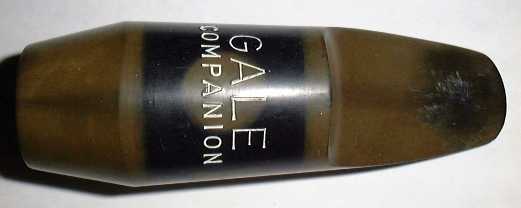 The Companion model no longer had the aluminum band on the shank.
The Companion model no longer had the aluminum band on the shank.
It has a bit more roll over at the baffle and a little more edge to the sound. Otherwise it is very similar to the Hollywood models.
The shank design changed as did the logo font. It is possible that these GALE mouthpieces with the flat GALE logo instead of round logo, might have been produced at the J.J. Babbitt factory in the late 1960s. Though this is unconfirmed.
Gale made a Companion metal mouthpiece too. However, it was much poorer quality than its earlier Circle Logo brother. All Gregory and Gale mouthpieces stopped being produced right around 1970.
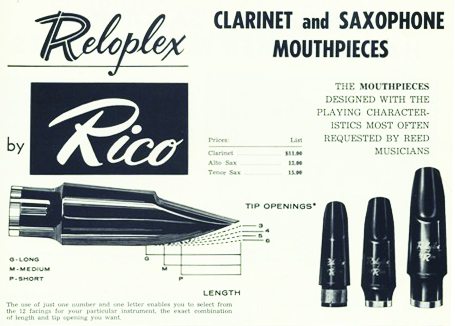
1955-1970: Rico Reloplex
A plastic mouthpiece with the same interior design called the Rico Reloplex was also made. The Reloplex was available from 1955 to 1970. This seems to be an injection molded ABS plastic mouthpiece. This mouthpiece was designed by Elmer Beechler.
There appears to be an aluminum ring on the shank, rather than the brass ring used on Gregory mouthpieces.
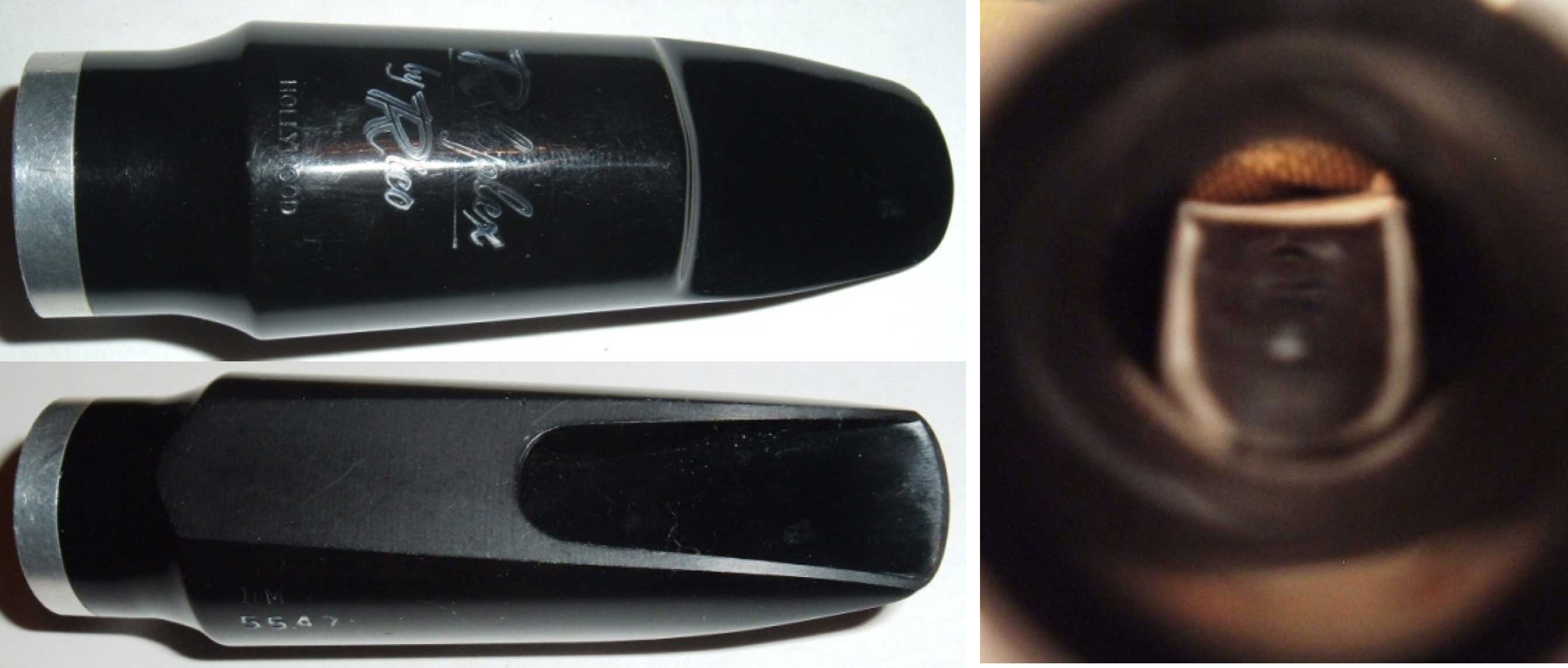
Charles Bay
Charles Bay bought many molds from Gale Products around 1969. Although, most of the mouthpieces made under his name are different than the Gregory and Gale mouthpieces. Here are some of the molds Charles Bay had, but later sold off 2016 when Charles Bay passed away.
2016: Morgan Mouthpieces
Morgan mouthpieces acquired some of the old Gregory molds and are now making the baritone model. It is called the “gm” bari and has the Morgan logo. More information on these can be found here. The alto and tenor models will come in 16, 18, and 20 chambers and will be available late in 2019.


